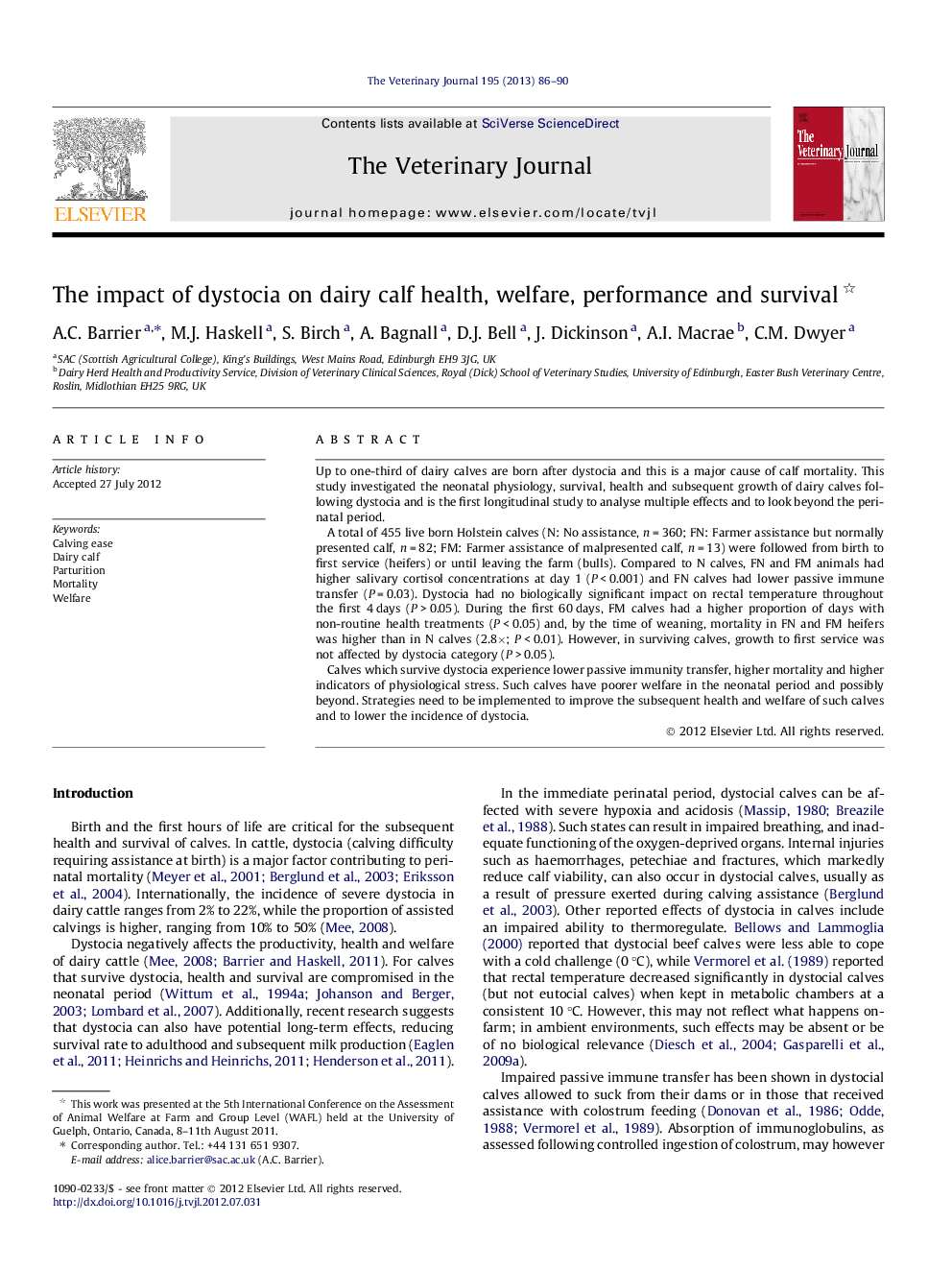| Article ID | Journal | Published Year | Pages | File Type |
|---|---|---|---|---|
| 2464195 | The Veterinary Journal | 2013 | 5 Pages |
Up to one-third of dairy calves are born after dystocia and this is a major cause of calf mortality. This study investigated the neonatal physiology, survival, health and subsequent growth of dairy calves following dystocia and is the first longitudinal study to analyse multiple effects and to look beyond the perinatal period.A total of 455 live born Holstein calves (N: No assistance, n = 360; FN: Farmer assistance but normally presented calf, n = 82; FM: Farmer assistance of malpresented calf, n = 13) were followed from birth to first service (heifers) or until leaving the farm (bulls). Compared to N calves, FN and FM animals had higher salivary cortisol concentrations at day 1 (P < 0.001) and FN calves had lower passive immune transfer (P = 0.03). Dystocia had no biologically significant impact on rectal temperature throughout the first 4 days (P > 0.05). During the first 60 days, FM calves had a higher proportion of days with non-routine health treatments (P < 0.05) and, by the time of weaning, mortality in FN and FM heifers was higher than in N calves (2.8×; P < 0.01). However, in surviving calves, growth to first service was not affected by dystocia category (P > 0.05).Calves which survive dystocia experience lower passive immunity transfer, higher mortality and higher indicators of physiological stress. Such calves have poorer welfare in the neonatal period and possibly beyond. Strategies need to be implemented to improve the subsequent health and welfare of such calves and to lower the incidence of dystocia.
